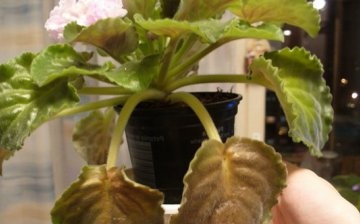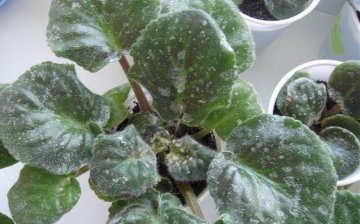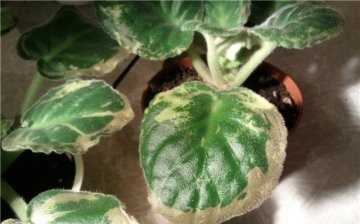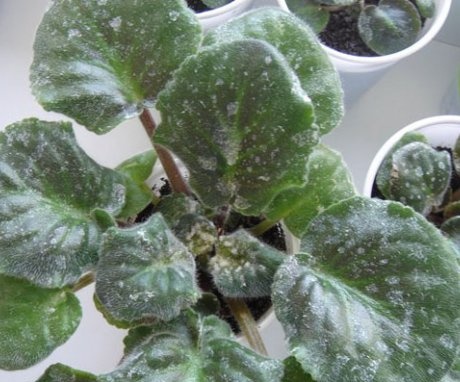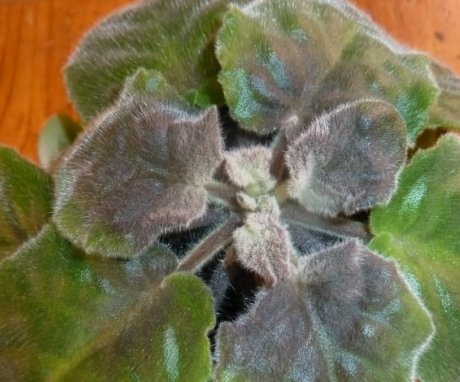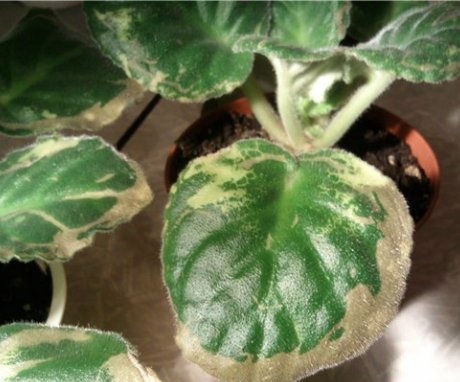Diseases of violets in the photo and how to overcome them
Violets are very often called the queens of window sills, because not a single houseplant decorates a room as well as a well-groomed violet with abundant flowering. But even a decorative violet can be damaged by a variety of pests and diseases. Which ones? And, most importantly, how to deal with such diseases?
Content:
The most common diseases of violets
Diseases of violets in the photo sometimes look just terrifying, but almost everyone who has violets in the house, came across some of them. Most often, violet diseases in the photo are represented by drooping leaves, browning and decay of the lower leaves, a dusty white bloom or a fluffy smoky bloom. Each of these diseases has its own scientific names and methods of treatment.
The most common diseases:
- powdery mildew;
- decay of roots;
- late blight.
Powdery mildew
Unfortunately, this disease is quite common in violets. Its cause is fungal infection. As a result, white bloom appears on almost all parts of the plant. In addition, the affected part may also become uneven, and also become covered with shallow ulcers. Eventually, the plant stops growing and gradually dies. In most cases, a similar disease is observed in the spring, since it is at this time of the year that the air humidity is increased and the temperature is lowered.
If powdery mildew appears on the plant, which cannot be wiped off, then the violet will have to be sprayed with a special solution, which is acquired depending on the stage of the disease - topaz and saprol - in the early stages, bayleton - in later stages. It is necessary to spray the plant according to the instructions or recommendations of the drug sellers.
Decay of roots
With such a disease, the first sign will be the condition of the violet leaves. They begin to lose elasticity, hang on petioles, and also look like dusty outwardly. The main reason for this state of the plant is excessive watering with cold water or finding the violet in a too cold room.
To combat root decay, it is necessary to transplant the violet into a new and loosened one as soon as possible. soil... But sometimes such measures do not help, so there is only re-root. For this, the trunk up to the healthy tissue is cut off and placed in water under the bag. After some time, new roots should form. When this happens, the plant is planted in fresh and loosened soil.
Late blight
If the stems of violets turn brown and begin to rot, fall off, exposing the trunk, then most likely the plant has late blight or fusarium. This fungal disease is quite dangerous, as it enters the plant through the root system, as well as small damaged areas. Symptoms: decay of roots, leaves lose their elasticity, the surface of the flower turns brown. Weakened plants are most often affected. The most predisposing conditions for the development of late blight is high humidity.
To treat the plant, remove it from the pot, remove all rotten and brown roots, leaving only healthy roots (if the whole root has rotted, then it is cut with a razor to a green stem), and the violet should be transplanted into a new pot with fresh soil with the addition of loosening substances or in vermiculite.
Preventive measures
Prevention is the most important thing to prevent many violet diseases. Therefore, after purchasing a new flower in a store, it is necessary to isolate it from other plants in the house for some time in order to exclude the possibility of a possible disease.
Here are some guidelines to help protect the violet from possible illness:
- Do not leave the violet in bright sunlight. Otherwise, there is a possibility of light yellow spots and even holes in the leaves of the plant.
- Do not use water that is too cold. brown spots may appear on the leaves.
- Observe the temperature regime, do not let the violet freeze. The most favorable temperature is + 22-24 degrees. With hypothermia, the leaves may bend around the edges and turn pale. Also, in dry and cold air, the violet can stop blooming.
- Do not abruptly change the conditions of detention, for example, do not transfer a flower from a room with humid air to a room with dry and warm air. Because of this, it is likely that the buds and flowers may begin to fall off.
- Do not water the violet with a solution with a high concentration of fertilizers. The buds and flowers will begin to fall off.
- Keep the windowsill clean, from time to time rinse the violet leaves with warm water.
- If the plant nevertheless died, for example, from late blight, the violet must be destroyed, and the pot must be sterilized.
Indeed, you can always try to cure beautiful violets from this or that disease, you just need to start right after her. look after and show at least a little extra attention.



